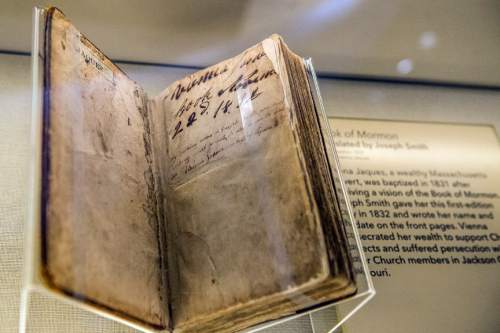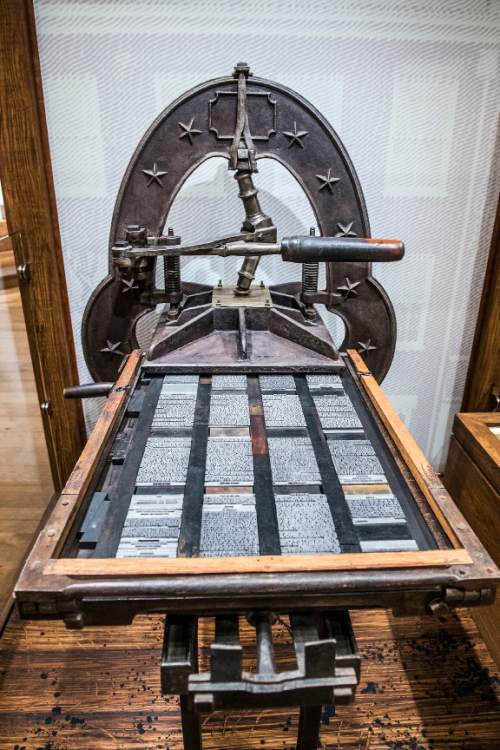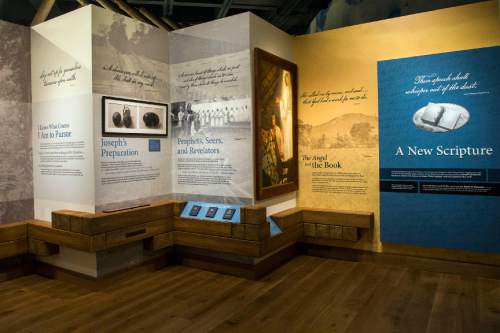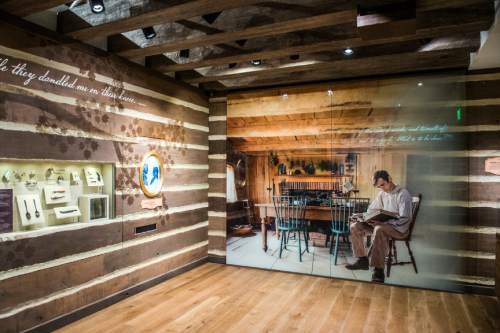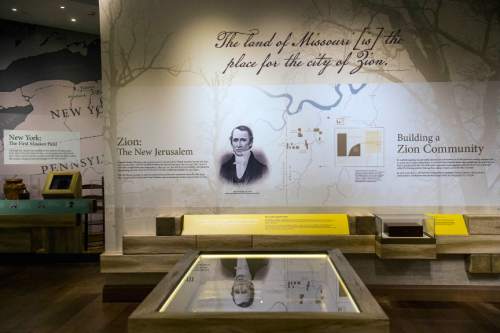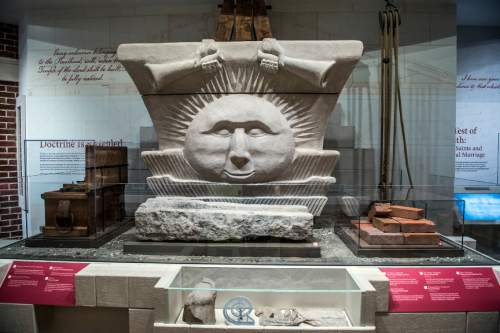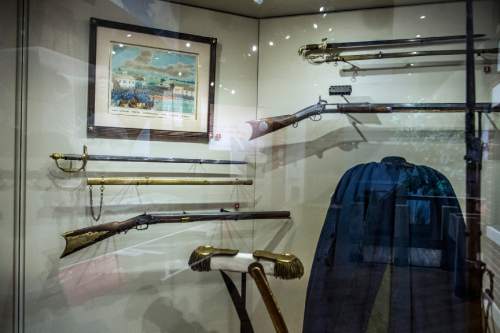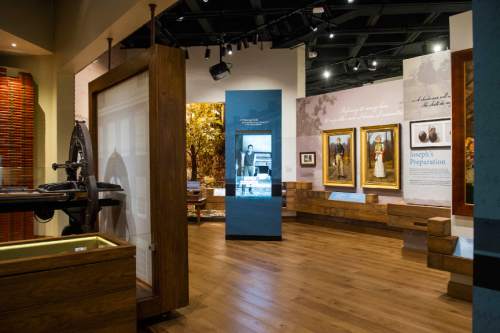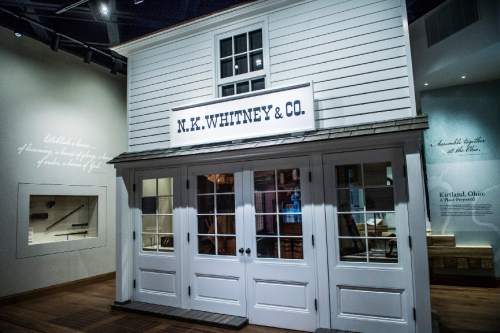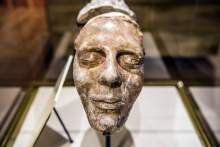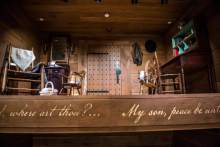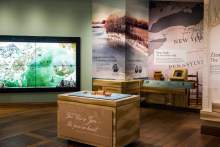This is an archived article that was published on sltrib.com in 2015, and information in the article may be outdated. It is provided only for personal research purposes and may not be reprinted.
Images of an egg-shape brownish rock — the so-called "seer stone" — that LDS Church founder Joseph Smith used to produce The Book of Mormon. An interactive display where visitors can try their hands at being a scribe to Smith as he dictated the faith's unique scripture. A specially constructed 220-degree-view theater that takes viewers into a thicket of trees in upstate New York where Smith claimed a vision of God and Christ.
Touch screens galore. Black-and-white profiles of Smith family members that start talking when you walk by. Smart cases that light up. Maps that allow children to direct ships across the Atlantic. The clothes Smith's brother Hyrum was wearing when he was gunned down.
There's even a replica of the Whitney Store, used during the Mormons' days in Illinois, where contemporary visitors can take selfies.
These are among the hallmarks of the new and improved LDS Church History Museum in downtown Salt Lake City, which reopens Wednesday after a yearlong closure for renovation.
The museum opened in 1984 and now focuses much more on art, historical items and multimedia, Richard Turley Jr., assistant LDS Church historian, said Tuesday. "It's a wonderful combination of original artifacts and new technology to attract a new generation."
The renovations are geared toward offering story experiences, rather than being passive tales.
The redone museum coincides with a move by officials in The Church of Jesus Christ of Latter-day Saints to be more transparent and less simplistic in their retelling of the Mormon historical narrative.
In the past two years or so, the Utah-based faith has posted on its website more than a dozen "Gospel Topics" essays — which discuss polygamy, race relations, revelation, scripture and translation, among other issues.
"This is a great time for church history," LDS Church Historian Steven E. Snow said Tuesday at a media preview and ribbon-cutting event. "And this is a marvelous exhibit."
LDS apostle Jeffrey R. Holland, who oversees the church's historical efforts, said he was "thrilled" to know that thousands of visitors will get a "view of our collective past."
A sense of honor and respect for history "is essential to any civilized society," he said, adding that it has "always been part of LDS history."
"The building and exhibits were tired," Holland told The Salt Lake Tribune. "In its own way, it fits with trying to tell our story as openly and honestly as we know how."
Historians consulted scholars "far and wide," the apostle said. "When we learn it, we'll tell it. When we know more, we'll teach it."
The image of early Mormonism is more human, he said, "warmer and more attractive."
The new approach highlights the contribution of Mormon women — from the church's founding in 1830 through Smith's death in 1844 and various Western migrations in 1846 — by displaying artifacts from the creation of the Relief Society and showcasing video testimonials of women talking about their experiences with early LDS polygamy.
One of the museum's new permanent exhibits, The Heavens Are Opened, focuses on "how the hand of God guided the establishment of the church through Joseph Smith and the Mormon pioneers."
The film, using several cameras and a helicopter, puts viewers inside what Latter-day Saints call "the Sacred Grove." Drawing on nine accounts of Smith's encounter with deity, a narrator retells the story while the scene is re-enacted.
The film, Holland said, has a way of "enveloping visitors as if we, too, had been there that day."
It's all part of the new museum's purpose, the apostle said. It's a way of bringing modern generations "face to face with people of the past."
Nothing, he said, compares to "seeing with your own eyes."
The Church History Museum is free and open to the public. Doors will reopen Wednesday at 9 a.m. The museum will be open Monday through Friday from 9 a.m. to 9 p.m. and on Saturday from 10 a.m. until 5 p.m. The museum is closed on Sunday.




